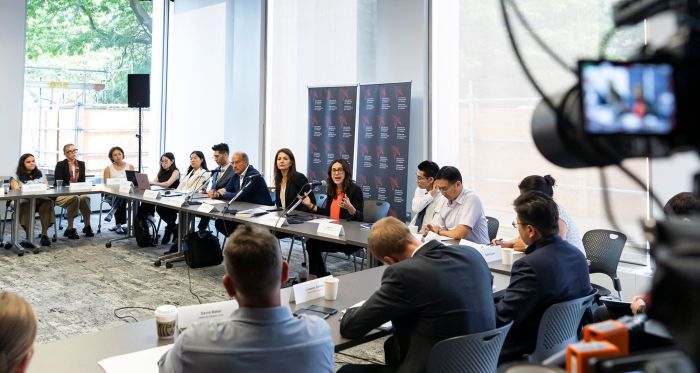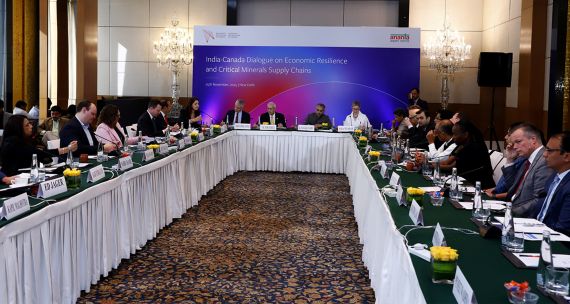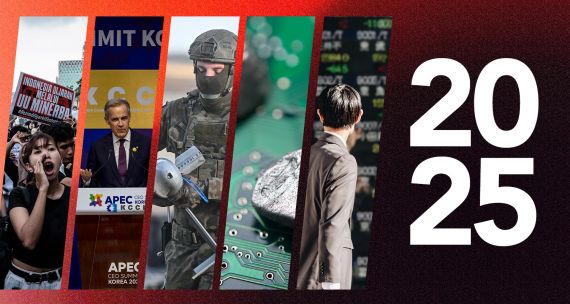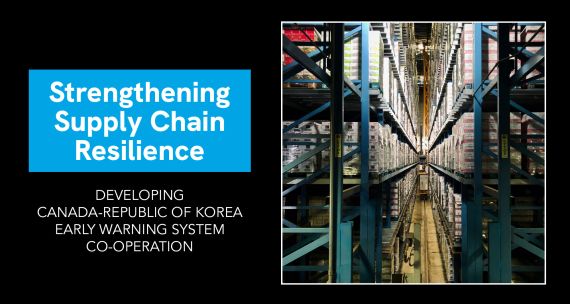On September 4, the Asia Pacific Foundation of Canada hosted a discussion on Canada’s strategic positioning in critical minerals. The event marked the launch of APF Canada’s Indo-Pacific Critical Minerals Hub, an APF Canada initiative with support from University of Ottawa that will provide evidence-based, interdisciplinary assessments of the evolving landscape of critical minerals policy in the Indo-Pacific to inform Canadian debates and policy.
Two distinguished speakers, Associate Professor Pascale Massot at the University of Ottawa, a leading scholar of China’s political economy and commodities strategy and an APF Canada John H. McArthur Research Fellow, and Constantine Karayannopoulos, a veteran industry leader in critical minerals and rare earths, explored with moderator Vina Nadjibulla, APF Canada’s Vice-President Research & Strategy, how Canada can move from ambition to action with an industrial strategy that balances economic opportunity, geopolitics, and long-term national interests.
Professor Massot stressed the importance of “right-sizing” the China challenge in the critical minerals supply chain. While China controls the majority of global refining capacity — 97 per cent in cobalt, 96 per cent in rare earths, 98 per cent in graphite, and 83 per cent in copper — this dominance is not solely due to low environmental standards, but rather of Beijing’s sustained, large-scale investment and strategy. Nevertheless, China has vulnerabilities: it is more than 50 per cent import-dependent for over half of the non-fuel critical minerals it consumes, and its downstream industries face growing pushback in global markets.
She also urged Canada to right-size the U.S. challenge. The strategy Canada has been following since the administration of U.S. President Joe Biden may no longer be aligned with a rapidly shifting U.S. landscape, where deregulation and the rolling back of climate targets could draw capital southward.
Mr. Karayannopoulos, drawing on decades of industry experience in the rare earths sector, including as the first foreign investor in China’s rare earth industry, warned that the West has been “asleep at the wheel,” falling far behind competitors who boast long-term, co-ordinated critical minerals strategies.
He underscored the point that China’s dominance today is the product of decades of deliberate government investment in R&D, skills development, and downstream industries. By contrast, Canada lacks domestic refining and magnet-making capacity, forcing mined resources such as lithium and rare earths to flow abroad, primarily to China, while junior companies struggle to secure financing amid restrictions on Chinese investment. To address this, he called for the creation of a world-class lithium refinery in Canada to provide offtake and support local miners.
He also noted that Canadian miners lack customers, pointing out that Canada’s multibillion-dollar subsidy package for electric vehicle (EV) manufacturing over the next 15 years lacks the “moral obligation” of requiring manufacturers to use Canadian critical minerals. Without such conditions, he argued, Canada risks subsidizing an industry that will remain dependent on foreign — especially Chinese — supply chains.
More broadly, he urged Ottawa to rethink its approach to foreign investment and to adopt a rational, long-term industrial strategy that supports not only resource extraction but also midstream processing and value-added production.
Finally, he stressed that industrial strategy cannot succeed without skills development. North America lacks the depth of chemical and metallurgical expertise that China has built. He called on Canadian universities to channel and incentivize talent into critical minerals research and training to build the next generation of expertise.
In her concluding remarks, Professor Massot offered four observations, all of which will inform the work of the Indo-Pacific Critical Minerals Hub.
First, Canada’s current strategy is too broad, listing six priority minerals without sufficient granularity. Ottawa should take into account industrial ecosystems — such as aerospace and automotive — and recognize that many critical minerals are byproducts of existing mining operations.
Second, Canada must co-ordinate with other countries, especially as multilateral institutions weaken. While Canada has strengthened ties with traditional partners such as Germany, Asia has been largely absent from these efforts, even though many Indo-Pacific partners are central to global value chains.
Third, onshoring is not itself a recipe for resilience, nor does it make sense to apply uniform dependency thresholds across all minerals. Canada should pursue “asymmetric resilience” by recalibrating, rather than eliminating, dependencies, and locate acceptable positions of comfort for different minerals and end uses. At the same time, Canada should adopt a more assertive approach in building partnerships with third countries, especially in Latin America, where China is already deeply engaged.
Finally, we should be wary of the unchecked weaponization of resources. While securitization is unavoidable, continued escalation could undermine global stability and Canada’s own resilience goals. A balanced approach must also include commitments to transparency, open access, and reassurance.
• Edited by Erin Williams, Director, Programs, and Ted Fraser, Senior Editor, APF Canada





